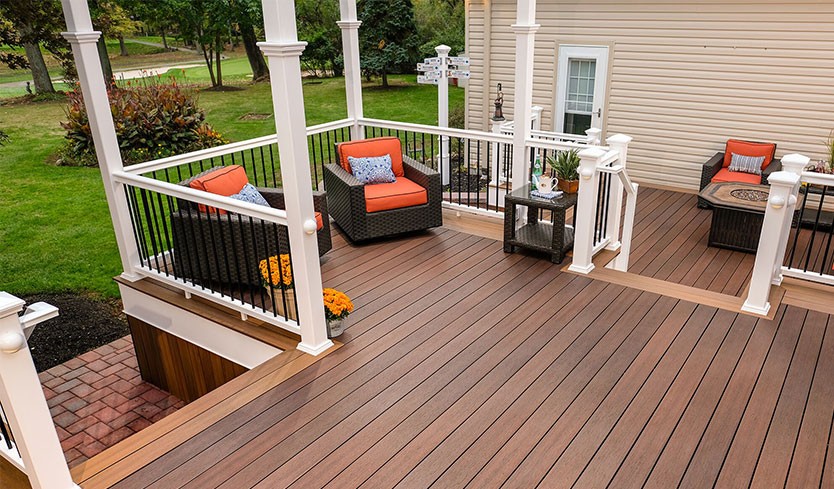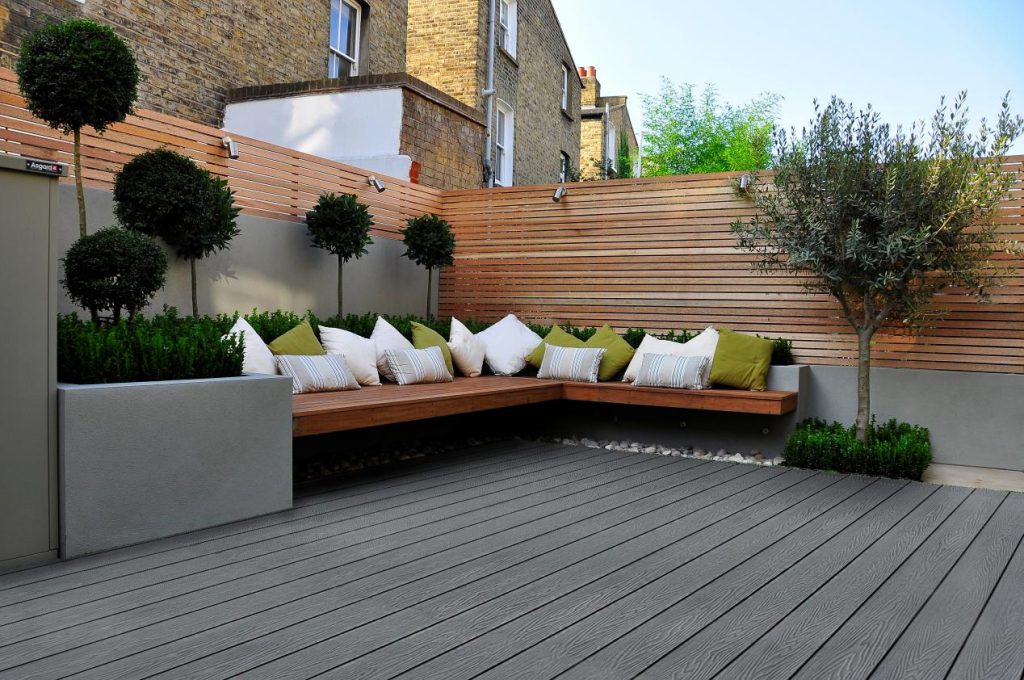When it comes to upgrading outdoor spaces with long-lasting and stylish materials, UltraShield composite decking and 3D embossed WPC decking are two of the most popular options on the market. Both offer impressive durability, weather resistance, and aesthetic appeal, yet they differ in construction, surface design, price, and maintenance requirements. Choosing between them can be challenging if you don’t understand their underlying features.
Table of Contents
This in-depth comparison will help you decide which decking material best suits your needs by exploring the structure, performance, texture, installation, and long-term value of UltraShield composite decking versus 3D embossed WPC decking, particularly the advanced products from Hosung—a manufacturer known for high-quality, eco-friendly WPC products.
Understanding the Basics
What Is UltraShield Composite Decking?
UltraShield composite decking is a next-generation capped composite material that combines wood fibers and high-density polyethylene (HDPE) within a durable, polymer shell. This co-extruded cap completely covers the deck board, protecting it from moisture, UV radiation, and stains. The cap layer is fused to the core under high heat and pressure, creating a seamless bond that enhances performance and appearance.
The main goal of UltraShield technology is to provide a low-maintenance, fade-resistant, and highly durable decking solution that mimics the look of natural wood without the need for constant sealing, painting, or staining.
What Is 3D Embossed WPC Decking (Hosung)?
3D embossed WPC decking from Hosung represents an evolution of traditional wood-plastic composite (WPC) technology. It’s made by combining wood fiber, recycled plastic, and additives to create a strong, eco-friendly material that replicates natural wood grain. Unlike standard WPC boards that are smooth or simply brushed, 3D embossed decking features deep-textured surfaces created through advanced embossing technology.
This embossing gives the decking a lifelike wood grain texture that not only looks more authentic but also provides better slip resistance. Hosung’s 3D embossed decking is known for its rich appearance, long lifespan, and resistance to cracking or fading, even in harsh outdoor conditions.

Material Composition and Manufacturing
UltraShield Composite Decking: Capped Innovation
The standout feature of UltraShield composite decking is its multi-layered co-extrusion process. It typically has:
Core: Made from recycled wood fibers and HDPE, offering strength and stability.
Outer cap: A 360-degree polymer shield that covers all sides of the board.
This co-extruded shell provides superior protection against water penetration, mildew, fading, and scratching. The result is a deck that maintains its original color and texture longer than most uncapped WPC options.
3D Embossed WPC Decking: Solid Core Design
Hosung’s 3D embossed WPC decking doesn’t have a separate cap layer but achieves impressive durability through high-density core composition and precise surface texturing. The 3D embossing process compresses and seals the surface during production, creating a hard, wear-resistant layer that mimics the touch and appearance of natural wood.
This structure makes it less likely to delaminate or peel, a risk that capped products may face if their outer shell gets damaged. In addition, Hosung uses UV-resistant pigments and stabilizers to ensure long-term color stability.
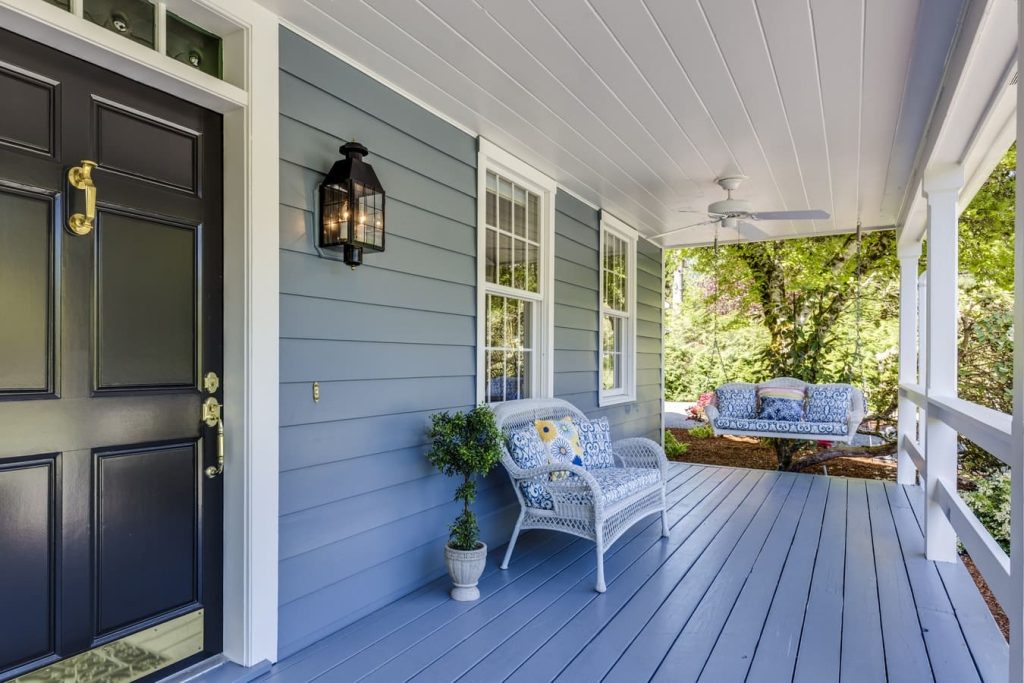
Aesthetic Appeal and Surface Texture
UltraShield Composite Decking: Refined, Consistent Beauty
UltraShield boards offer uniform color patterns and fine-grained wood effects. The capped surface allows manufacturers to create multitone hues, simulating the look of exotic hardwoods like Ipe, Teak, or Walnut. Its sleek finish appeals to homeowners who prefer a modern, clean-lined appearance.
Because of its smooth, sealed shell, UltraShield decking is also easy to clean and resistant to stains, making it suitable for families, restaurants, or pool areas.
3D Embossed WPC Decking: Natural, Realistic Feel
If you love the authentic look and tactile feel of wood, Hosung’s 3D embossed decking wins in realism. Its deep grain embossing provides a three-dimensional wood texture that feels like genuine lumber underfoot. The irregular patterns capture the charm of hand-scraped timber while maintaining the durability of composite material.
Each board has unique surface variations, giving decks a natural, organic appearance—something that traditional capped composites sometimes lack.
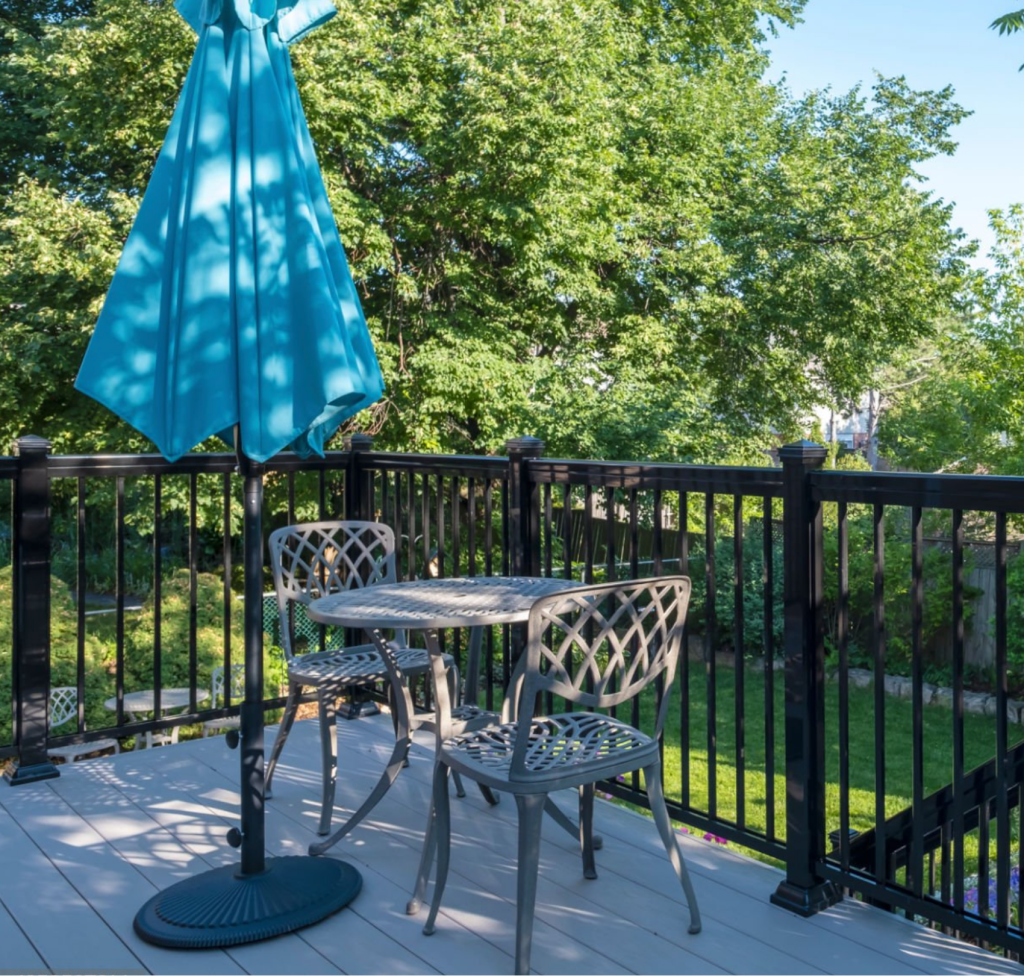
Performance and Durability
Water and Moisture Resistance
UltraShield composite decking, with its 360° polymer cap, is nearly impervious to water absorption. Even in humid or rainy climates, it resists swelling, rotting, or mold growth. This makes it ideal for coastal decks, pool surrounds, and areas with heavy rainfall.
3D embossed WPC decking, although not capped, features a densely packed composite core that effectively resists moisture. Hosung’s advanced formulation ensures that water penetration is minimal. However, compared to UltraShield’s fully sealed cap, it may absorb slightly more water over many years.
Verdict: UltraShield offers superior moisture protection, while Hosung’s 3D embossed decking still performs admirably in outdoor settings with proper installation.
UV and Fade Resistance
Both materials are engineered to withstand UV exposure. UltraShield’s polymer shell provides excellent fade resistance, maintaining its rich tones for years with minimal change. Meanwhile, Hosung’s WPC boards incorporate anti-UV additives directly into the mix, providing long-term stability even under intense sunlight.
Verdict: UltraShield has a slight edge in fade resistance due to its cap layer, but Hosung’s boards perform strongly with only minimal fading over time.
Scratch and Impact Resistance
The hard outer shell of UltraShield composite decking gives it better scratch protection, especially against pet claws, furniture, and heavy foot traffic. However, the smoother surface may show light marks more easily than a textured surface.
Hosung’s 3D embossed decking, on the other hand, uses its deep-grain surface to disguise small scratches effectively. The embossed texture not only feels authentic but also hides wear marks, maintaining a fresh look for longer.
Verdict: UltraShield offers harder surface resistance, while 3D embossed WPC decking wins in visual wear concealment.
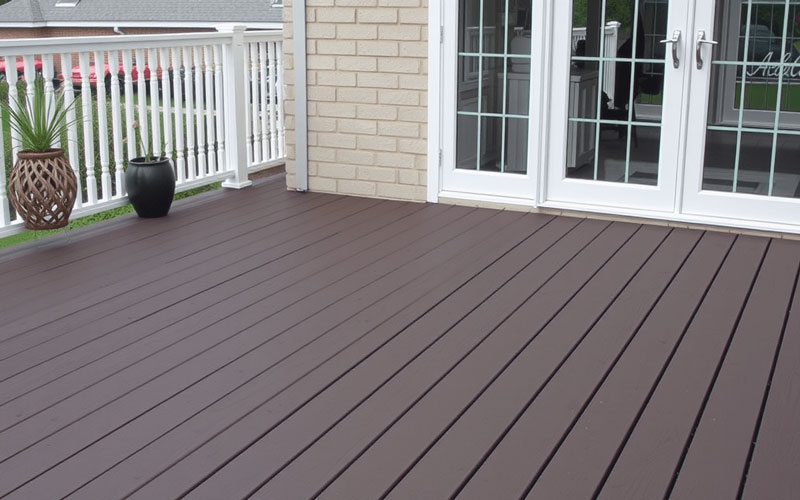
Installation and Maintenance
Ease of Installation
Both decking types use similar installation systems—typically hidden fasteners or clips—to ensure a seamless surface. The boards can be cut, drilled, and installed with standard woodworking tools.
UltraShield composite decking often requires careful cutting because of its capped layer, which must remain intact to preserve protection.
3D embossed WPC decking (Hosung) is more forgiving and easier to trim, as it has a uniform structure throughout.
Verdict: Hosung’s 3D embossed decking provides slightly easier handling during installation, while UltraShield demands more precision but rewards with enhanced protection.
Maintenance Requirements
Both decking types are virtually maintenance-free compared to traditional wood. However, the cleaning and upkeep differ slightly:
UltraShield composite decking: The capped surface prevents stains, mold, and dirt from adhering. A quick wash with soap and water keeps it looking new.
3D embossed WPC decking: Its textured surface may hold more dust or pollen, requiring occasional brushing or rinsing to maintain cleanliness.
Verdict: UltraShield is easier to clean, while Hosung’s embossed boards need minimal but slightly more frequent surface care due to their grain texture.
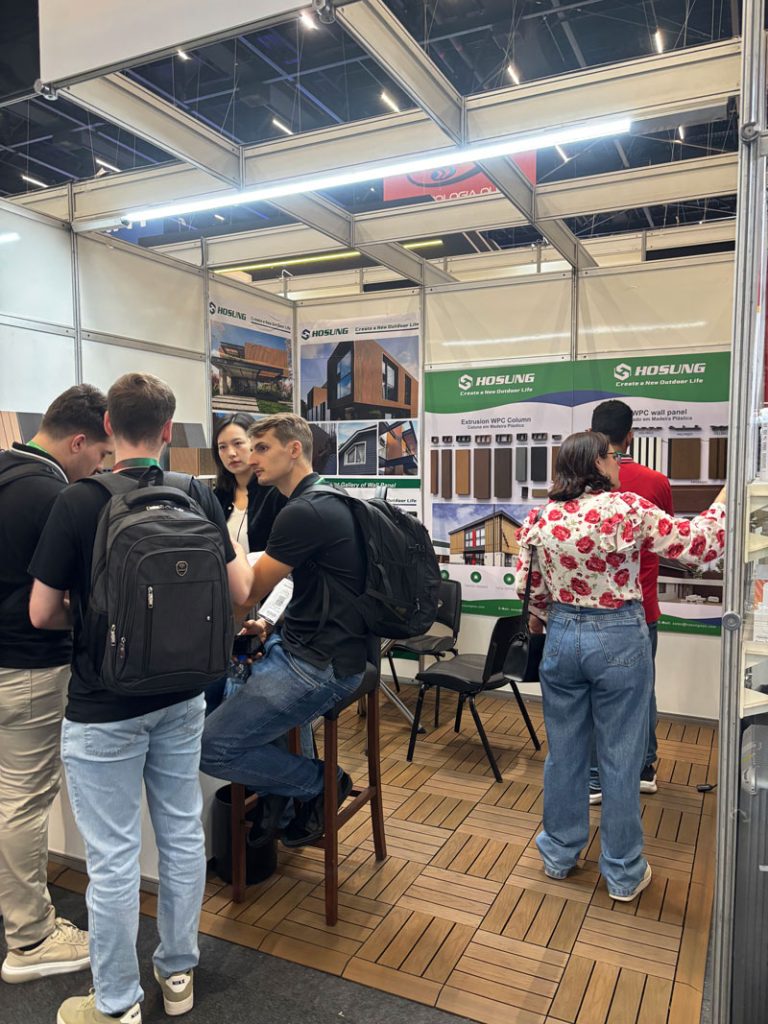
Slip Resistance and Comfort
One of the most important aspects of outdoor decking is safety under wet conditions.
Hosung’s 3D embossed WPC decking excels here. The deep texture offers excellent grip, reducing the risk of slips around pools or during rain. The embossed wood grain also provides a comfortable, barefoot-friendly feel that doesn’t get overly hot under the sun.
UltraShield composite decking also provides slip resistance but has a smoother surface compared to embossed textures. It remains safe underfoot but may feel a bit more slippery when wet.
Verdict: Hosung’s 3D embossed WPC decking provides superior traction and comfort.
Environmental Impact
Both UltraShield and Hosung’s 3D embossed decking are environmentally friendly, made from recycled materials and sustainable resources.
UltraShield composite decking uses recycled wood fibers and plastic, minimizing waste. Its long lifespan further reduces environmental impact.
Hosung’s 3D embossed WPC decking is 100% recyclable, with no formaldehyde or toxic chemicals. It’s produced using eco-conscious methods and can be reprocessed at the end of its service life.
Verdict: Both are eco-friendly, but Hosung emphasizes sustainability throughout its manufacturing cycle, giving it a small advantage in green performance.
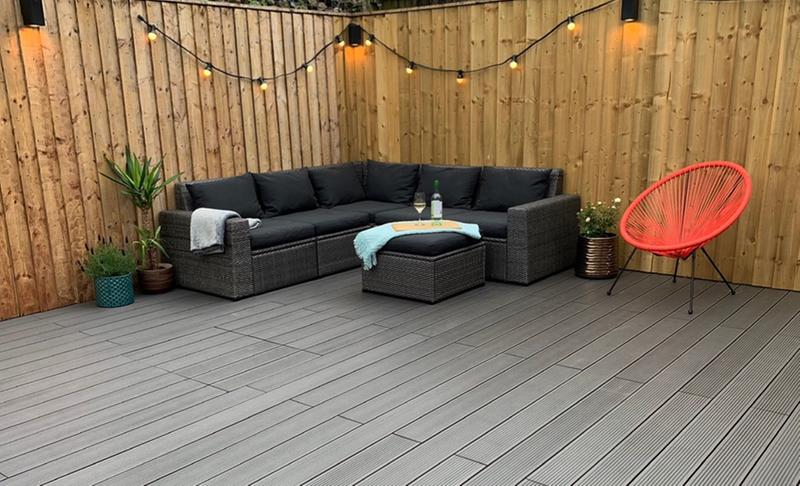
Cost and Value
Initial Cost
UltraShield composite decking typically costs more due to its advanced co-extrusion process and protective cap. The premium pricing reflects its enhanced durability and minimal maintenance.
Hosung’s 3D embossed WPC decking offers a more budget-friendly option while still providing excellent performance and a realistic wood appearance. For large projects or budget-conscious homeowners, this can mean significant savings.
Long-Term Value
Although UltraShield decking may have a higher upfront cost, its longer lifespan and reduced maintenance make it a cost-effective investment over time. Hosung’s embossed decking, while slightly more affordable, still delivers outstanding value and a long service life.
Verdict: UltraShield wins in lifetime durability, while Hosung’s 3D embossed WPC decking offers the best balance of performance and affordability.

Applications and Design Flexibility
UltraShield Composite Decking
Because of its sleek finish and color consistency, UltraShield is often chosen for modern designs, rooftop terraces, pool decks, and contemporary patios. Its capped surface ensures easy cleaning, making it ideal for restaurants, resorts, or family homes where cleanliness is a top priority.
3D Embossed WPC Decking (Hosung)
Hosung’s embossed decking shines in natural or rustic outdoor designs—perfect for gardens, pergolas, balconies, and eco-resorts. The realistic wood texture enhances harmony with nature, blending seamlessly with greenery and outdoor furniture.
Verdict: UltraShield suits modern styles; Hosung’s 3D embossed decking complements natural and classic aesthetics.
Lifespan and Warranty
UltraShield composite decking generally comes with 25-year residential warranties, covering fade, stain, and structural defects. The capped layer’s resistance to moisture and discoloration ensures decades of beauty and function.
Hosung’s 3D embossed decking also offers long-term warranties (often 15–20 years), depending on the product line. Its dense composite formulation and UV stabilizers contribute to excellent longevity even in extreme conditions.
Verdict: UltraShield lasts slightly longer, but Hosung’s 3D embossed decking provides outstanding durability for its price range.
Pros and Cons Summary
| Feature | UltraShield Composite Decking | 3D Embossed WPC Decking (Hosung) |
|---|---|---|
| Structure | Capped composite (multi-layer) | Solid composite with 3D texture |
| Appearance | Smooth, uniform, modern | Deep-grained, natural, wood-like |
| Moisture Resistance | Excellent | Very good |
| Scratch Resistance | High | Good; hides scratches well |
| Slip Resistance | Moderate | Excellent |
| Maintenance | Minimal | Low |
| UV/Fade Resistance | Excellent | Good |
| Price | Higher | More affordable |
| Eco-Friendliness | Recycled materials | 100% recyclable and sustainable |
| Best For | Modern designs and premium decks | Natural aesthetics and budget projects |

Final Verdict: Which Decking Is Right for You?
Choosing between UltraShield composite decking and 3D embossed WPC decking (Hosung) depends on your priorities.
If you want maximum protection, premium aesthetics, and minimal maintenance, UltraShield composite decking is the superior choice. It’s engineered for longevity, color stability, and a clean, modern finish that lasts decades.
If you prefer natural wood realism, strong slip resistance, and great value for money, then Hosung’s 3D embossed WPC decking is a fantastic option. It combines practicality with warmth and texture, making outdoor spaces feel inviting and authentic.
Ultimately, both decking types represent the future of outdoor materials—sustainable, stylish, and durable alternatives to traditional wood. Whether your goal is luxury minimalism or rustic charm, you can’t go wrong with either choice.


